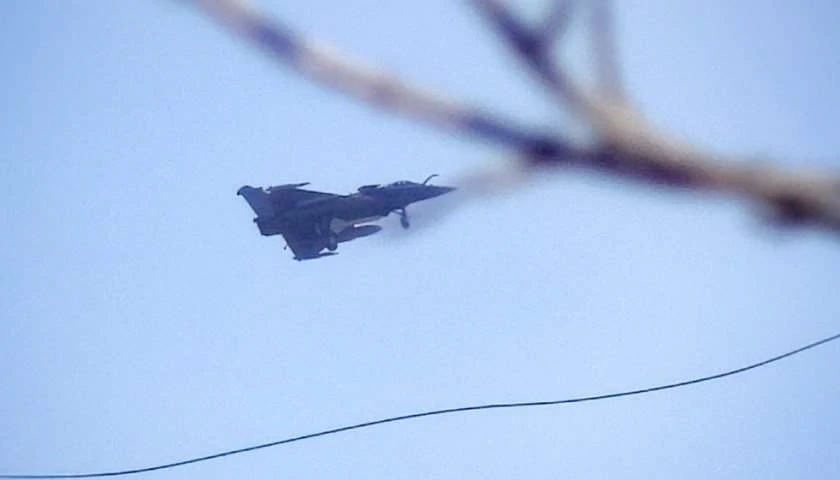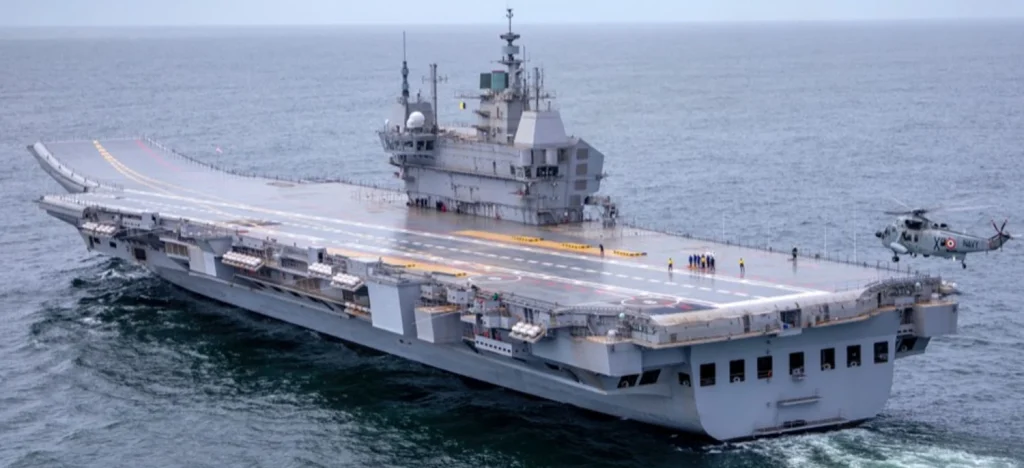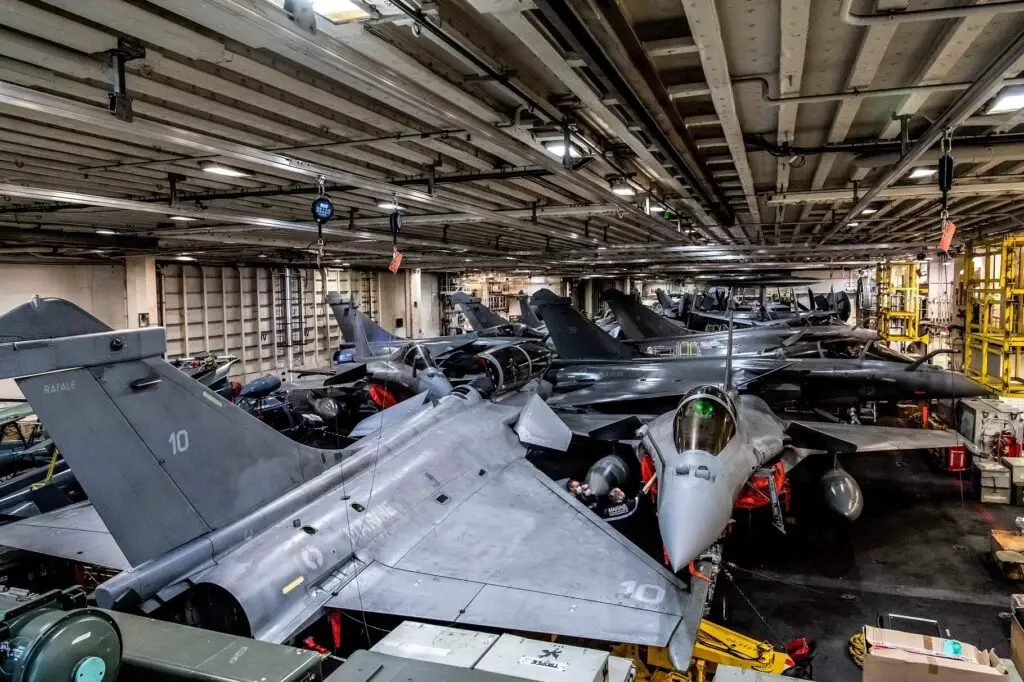An image of a French Rafale during its qualification trials for the upcoming Indian Navy Aircraft carrier INS Vikrant, now called IAC-1 Vikrant, shows it carrying a full load.
It is unknown if it took off from IAC-1 or INS Vikramaditya or Goa’s shore-based test facility (SBTF) at INS Hansa. But it is speculated it took off from SBTF as the aircraft is yet to begin such trials from the IAC-1. Once it clears the SBTF stage, the Rafale will be tested for taking off and landing from the aircraft carrier INS Vikramaditya before moving on to IAC-1.
Since the beginning of January, French company Rafale has been actively testing the Rafale fighter, setting the limits for loading the aircraft when it takes off from Indian aircraft carriers. The aircraft carriers of the Indian Navy are equipped with Ski Jumps and not a catapult that equips the French and U.S. Navies.
The image shows the Rafale aircraft is carrying two fuel tanks of 2 thousand litres each, two Mica medium-range missiles, two Mica self-defence missiles and one AM-39 Exocet anti-ship missile under the fuselage.

Rafale M, the marine version of Rafale, can take off with about 5.5 tons and has a Maximum Tak off Weight (MTOW) of 20-21 tons while having a flight range of almost 1 thousand km.
Three key challenges for joining INS Vikrant Airwing
Indian Navy is testing two aircraft’s, French Rafale M and Boeing F-18, to join its upcoming aircraft carrier INS Vikrant. The aircraft carrier is designed to operate Russian MiG-29 K’s currently operating from INS Vikramaditya. Russia has provided consultancy and equipment for the airwing of the carrier. The Navy is facing challenges with MiG-29’s and is exploring other options for Vikrant’s airwing.
To accommodate a new aircraft, the Indian Navy has to test them for three key challenges, including taking off from the ski jump, dimensions of the aircraft – especially the tail height, and arrestor wire landing of the aircraft.
Ski jump take off issue
The first challenge is taking off from INS Vikrant. As mentioned above, the U.S. and the French carriers use catapult assisted take-off while the Indian carriers use Ski Jumps or angled deck. Dassault and Boeing are confident of their aircraft taking off from a ski jump. The current testing will set the limits for payload during taking off.
Aircraft dimension issue
The second challenge is accomodating these aircraft in the hanger of the INS Vikrant. The aircraft can fit the hanger, but the issue arises during engine swaps and repairs when the aircraft is put on a jack. During the process, the tail of the aircraft, which is normally higher than the rest of the aircraft, may impede the process. As per the general specifications available on the web, Rafale M has a height of about 5.34 m, F-18 has a height of about 4.66 m, and the Mig-29K has a height of 4.4 meters. Height wise, both the aircraft have a disadvantage against the Mig-29K.

Another challenge with the dimension of the aircraft is the width of aircraft. This is important for both storage and aircraft lift operations. F-18 has a wingspan of 11.43 m / 8.38 m with wings folded, Rafale’s wingspan is 10.90 m and MiG-29’s wingspan is 11.99 m. Widthwise, both the aircraft are better than Mig-29.
The length of F-18 is about 17.1 m, Rafale M is about 15.30 m, and Mig-29K is about 17 meters. Rafale M has an advantage in this parameter.

Arrestor wire issue
The third challenge is the arrestor wire landing. When the aircraft comes for the touch down on the carrier deck, it comes with a certain weight and speed, which might result in the breakage of the arrestor wire if they exceed the parameters Vikrant arrestor wire is designed to endure.
F-18 or Rafale M or Mig-29K for INS Vikrant?
Russia’s Nevskoye Design Bureau designed the aviation facilities of the INS Vikrant as Russian support was solicited for Vikrant’s aviation complex. The carrier is designed to deploy Russian MiG-29K fighters and Kamov helicopters to ensure interoperability with the other aircraft carrier INS Vikramaditya.
Apart from the maintenance issues, Mig-29 lacks an AESA radar, which is critical for today’s battlefield. If the key parameters are matched, Dassault Rafale M or Boeing F/A-18E/F Super Hornet may equip INS Vikrant’s airwing.
Also read – India could lease Rafale M from France to jumpstart INS Vikrant airwing
